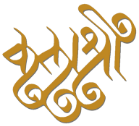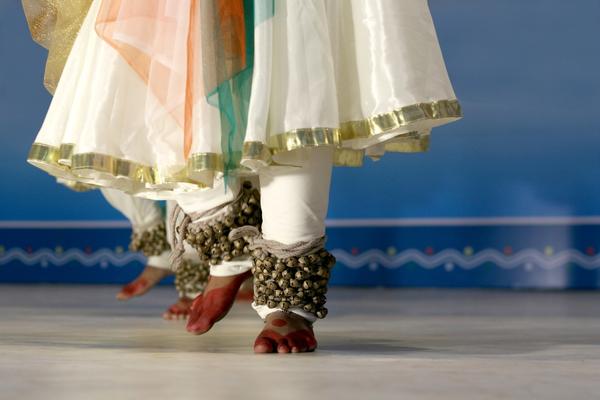Kathak, a classical Indian dance form, is known for its intricate footwork and captivating performances. But did you know that one of the most important aspects of Kathak dance is the ghungroo ? Yes, that’s right! The small, metallic bells that adorn the dancer’s ankles have a significant role in creating the mesmerising experience that is Kathak.
The Rhythmic Secrets of Ghungroo in Kathak Dance
One of the most fascinating aspects of Kathak dance is the intricate footwork that creates rhythmic patterns. The inclusion of ghungroo adds an additional layer to this already complex art form. The sound produced by the ghungroo enhances the overall performance of Kathak dance and helps the dancer express emotions through their movements.
But, how does it work?
The ghungroo is made up of small metallic bells that are tied around the ankles of the dancer. As the dancer moves, the bells create a rhythmic sound that is in sync with the music. The sound of the ghungroo not only adds to the musicality of the performance but also helps to accentuate the intricate footwork that is characteristic of Kathak dance.
How To Choose the Right Ghungroo
Choosing the right ghungroo is a crucial aspect of Kathak dance. The sound that is produced by the ghungroo is dependent on various factors such as the number of bells, the quality of the bells, and the material used to make the ghungroo .
Generally, a set of ghungroo has around 100 to 150 bells. However, professional dancers may use ghungroo with up to 200 bells. The quality of the bells is also important, as it affects the clarity and richness of the sound. The material used to make the ghungroo can vary, with some made from brass, copper, or even silver. Each type of material produces a distinct sound.
The Role of Ghungroo in Expressing Emotions
In Kathak dance, the movement of the feet is often the primary means of expression. The ghungroo plays an essential role in this expression as it allows the dancer to create a range of moods and emotions through their footwork.
For example, a fast and vigorous footwork sequence with the sound of the ghungroo ringing loudly can convey excitement or joy. On the other hand, a slow and gentle footwork sequence with the sound of the ghungroo ringing softly can convey sadness or melancholy. By varying the intensity and speed of the footwork, the dancer can create a range of emotions.
The ghungroo is a vital component of Kathak dance, adding depth and beauty to the performance, and helping to express emotions through intricate footwork. By choosing the right ghungroo and utilising its sound to create rhythmic patterns, a dancer can truly capture the essence and artistry of this classical Indian dance form.
Symbolic Importance of ghungroo in Kathak
Kathak, a classical Indian dance form, is more than just a graceful performance. It is a way to connect with one’s roots and cultural traditions. ghungroo , the small bells or jingles tied around the dancer’s ankles, plays a crucial role in this dance form. Beyond creating rhythmic patterns, the ghungroo holds great symbolic significance in Kathak.
The Dancer’s Connection with Roots and Traditions
The ghungroo represents the deep connection that Kathak dancers have with their cultural and artistic traditions. The sound of the bells echoes the sounds of the past, reminding the dancer of their legacy and the rich heritage of classical Indian dance. It is a symbol of the dancer’s willingness to carry forward and preserve these traditions for future generations.
An Extension of the Dancer’s Body
When a Kathak dancer performs, the ghungroo becomes an essential part of their body, as if it were an extension of their feet. It helps express the dancer’s emotions through intricate footwork and rhythmic patterns, making the performance more captivating for the audience. As the bell sound accompanies the dancer’s every movement, it creates an almost hypnotic effect that keeps the audience spellbound.
The Spiritual and Cultural Significance
Ghungroo is also associated with spirituality and cultural significance. In Hinduism, everything in the universe has a sound, and the sound of the ghungroo is believed to represent the sound of the universe. It is also believed to be a way to ward off negative energy and bring positive vibrations. Additionally, the color, design, and number of bells in the ghungroo carry cultural significance, reflecting the dancer’s aesthetic and artistic choices.
In conclusion, the ghungroo holds a multifaceted role in Kathak dance, serving as both a rhythmic instrument and a symbol of cultural heritage. Its resonance and the dancer’s skillful use of it enable the expression of a wide range of emotions through footwork. Beyond its artistic significance, the ghungroo connects the dancer to their roots, traditions, and spirituality. As it continues to enchant audiences and preserve the rich legacy of classical Indian dance, the ghungroo remains a cherished and integral part of the captivating world of Kathak.
Want to learn Kathak? Embark on a journey of self-discovery and cultural exploration as the kathak dance classes in Thane invites you to delve into the mesmerising and graceful world of Kathak. Join us and uncover the beauty of this vibrant art form, discovering the magic within yourself along the way.
Have Questions
Unleash the Grace of Kathak Dance! Enroll Now for Inspiring Kathak Dance Classes and Embark on a Journey of Rhythmic Elegance.




